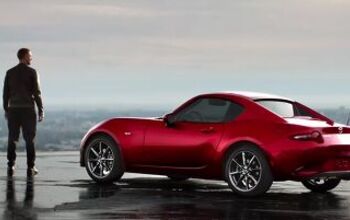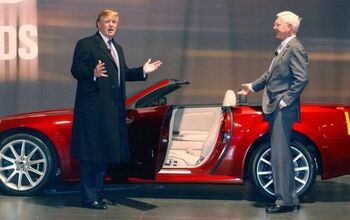QOTD: Hit 'em Where They Drive?

As you read earlier this week, the state of Illinois wants motorists to pay up. Big time. A new proposal that stands a good chance of passing into law not only more than doubles the state’s gas tax, it would also hit electric vehicle drivers with an annual $1,000 fee — a bill for adding wear and tear to the state’s roads and bridges while depriving state coffers of sweet, sweet gas tax revenue.
Some EV drivers are not what you’d call “happy” about it. But are you?
Twenty-four U.S. states already levy some sort of fee on EV drivers, designed to make up, in a small way, for what their drivers aren’t spending at the pumps. Ohio, West Virginia, Arkansas, Alabama, and Georgia ding EV owners $200 a year; other states see fees ranging from $50 (Colorado, Wyoming) to $100 (California) and $150 (Washington). The Northeast seems completely exempt from such fees, and it is there you’ll still find some rebates offered by state governments or participating utilities.
Elsewhere, perks exist for EV buyers — from the federal tax credit that’s already halved for Tesla and General Motors vehicles, to pretty much blanket HOV lane access, assuming such a lane exists anywhere near your home.
As electric vehicle sales struggle to rise above the current 1 percent (or so) take rate, incentives are drying up at a growing pace. One can imagine how ownership costs might change in five years’ time, when greater U.S. EV uptake (born of a Euro-centric product surge) leads more states to start looking at Illinois’ tactics, assuming the bill passes.
Upstream emissions aside, EVs are clean in operation. You’ll never get a whiff of one, and their missing tailpipes are cause for celebration if climate change ranks high on your list of concerns. Now, put yourself in the governor’s mansion. Is this debatable virtuousness enough reason for EV owners to side-step paying into the road budget, or would you make like Illinois and try to recoup every last lost penny?
Sound off in the comments.
[Image: Nissan]

More by Steph Willems
Latest Car Reviews
Read moreLatest Product Reviews
Read moreRecent Comments
- El scotto UH, more parking and a building that was designed for CAT 5 cable at the new place?
- Ajla Maybe drag radials? 🤔
- FreedMike Apparently this car, which doesn't comply to U.S. regs, is in Nogales, Mexico. What could possibly go wrong with this transaction?
- El scotto Under NAFTA II or the USMCA basically the US and Canada do all the designing, planning, and high tech work and high skilled work. Mexico does all the medium-skilled work.Your favorite vehicle that has an Assembled in Mexico label may actually cross the border several times. High tech stuff is installed in the US, medium tech stuff gets done in Mexico, then the vehicle goes back across the border for more high tech stuff the back to Mexico for some nuts n bolts stuff.All of the vehicle manufacturers pass parts and vehicles between factories and countries. It's thought out, it's planned, it's coordinated and they all do it.Northern Mexico consists of a few big towns controlled by a few families. Those families already have deals with Texan and American companies that can truck their products back and forth over the border. The Chinese are the last to show up at the party. They're getting the worst land, the worst factories, and the worst employees. All the good stuff and people have been taken care of in the above paragraph.Lastly, the Chinese will have to make their parts in Mexico or the US or Canada. If not, they have to pay tariffs. High tariffs. It's all for one and one for all under the USMCA.Now evil El Scotto is thinking of the fusion of Chinese and Mexican cuisine and some darn good beer.
- FreedMike I care SO deeply!

































Comments
Join the conversation
Mom used to ask me if I ever thought about moving "back home" (I grew up about 2/3 of the way between Chicago and Rockford just off I-90) and my answer was always that my employer would have to double my salary or the state government had to be fixed first. There's a reason that Illinois and New Jersey are generally considered the most corrupt, it should come as no surprise that both are states that either have or are seriously contemplating an exit tax. The $1000 EV tax is a ridiculous but it's certainly intended as a luxury tax. The Model S owners will grind their teeth and pay it, which is what the state expects. I feel bad for the middle-class folks who stretched for a Prius with the hope that the TCO will be worth it over its lifetime and may have to weigh the tax vs. eating the depreciation to trade it off. I wonder how they define the Volt.
If the extra amount charged to the EV driver equals what the driver of a ***comparable*** ICE car would pay, then fine. So if you drive a Leaf, they should charge you what a Corolla driver would pay in gas tax over a year. Which, I feel pretty confident, is a hell of a lot less than $1000. That seems obviously excessive and punitive.